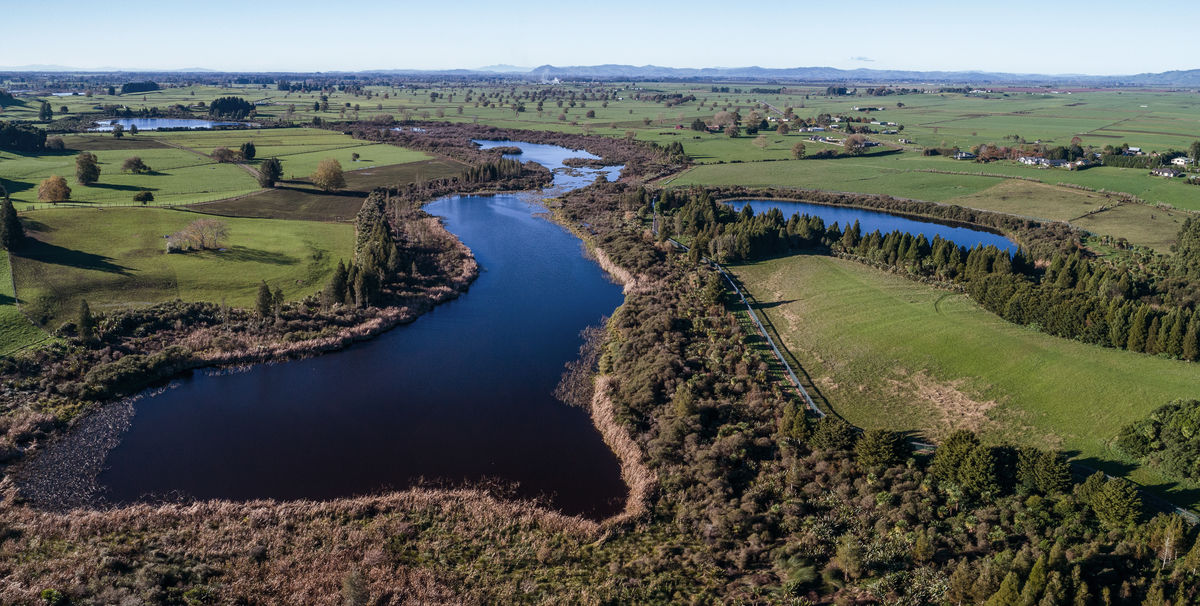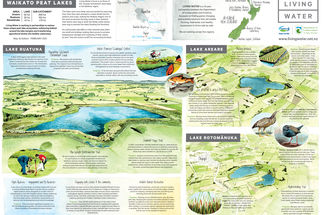

Waikato Peat Lakes progress map
Waikato Peat Lakes FACTS
About the area
Globally peat lakes are rare ecosystems – the Waikato Region is home to 31 of them. These lakes formed over thousands of years and are home to species that have adapted to their unique conditions.
Classified as ‘acutely threatened’, the Waikato peat lakes are important historically, culturally and environmentally.
Living Water is focused on three specific lakes – Areare, Rotomānuka and Ruatuna. Improving water quality of these lakes will help mudfish, bittern, fern birds, dab chicks and long-finned eel return. It will also enhance recreational use.
The challenge
Lakes Areare, Ruatuna and Rotomānuka have elevated levels of nutrients, sediment and pathogens, and considerable nutrient stores within lake sediments. This has been caused by the various productive land uses in the area and the highly modified hydrology and drainage systems. Enhancement of water quality in these lakes is extremely difficult and will require a range of remediation measures.
Living Water’s key focus is restoring unique peat ecosystems, enhancing habitat around the lake margins, and transforming agricultural drains into healthy waterways.
Projects include developing Farm Environment Plans for the Fonterra farms in the catchments, trialling sediment traps and floating wetlands to remove contaminants before they enter the lake, restoring lake-margin habitats and developing a pa harakeke/rongoa garden with mana whenua.
At a glance
- 268ha Areare sub-catchment area
- 479ha Rotomānuka sub-catchment area
- 190ha Ruatuna sub-catchment area
- 9 Fonterra dairy farms

